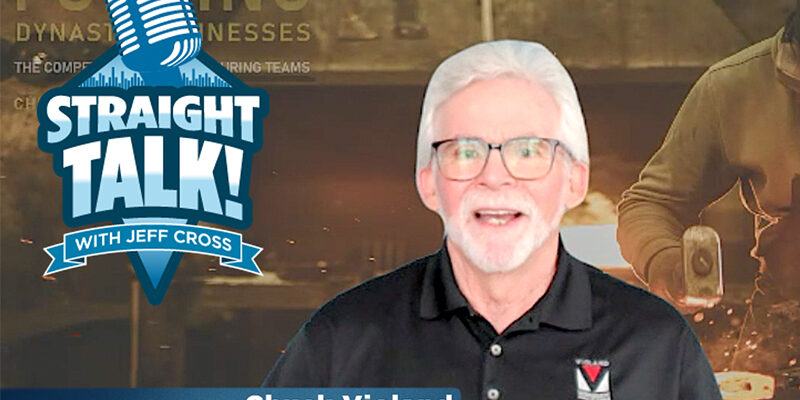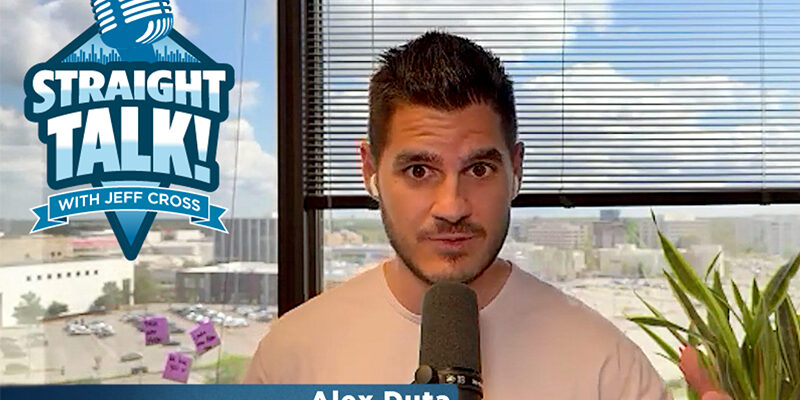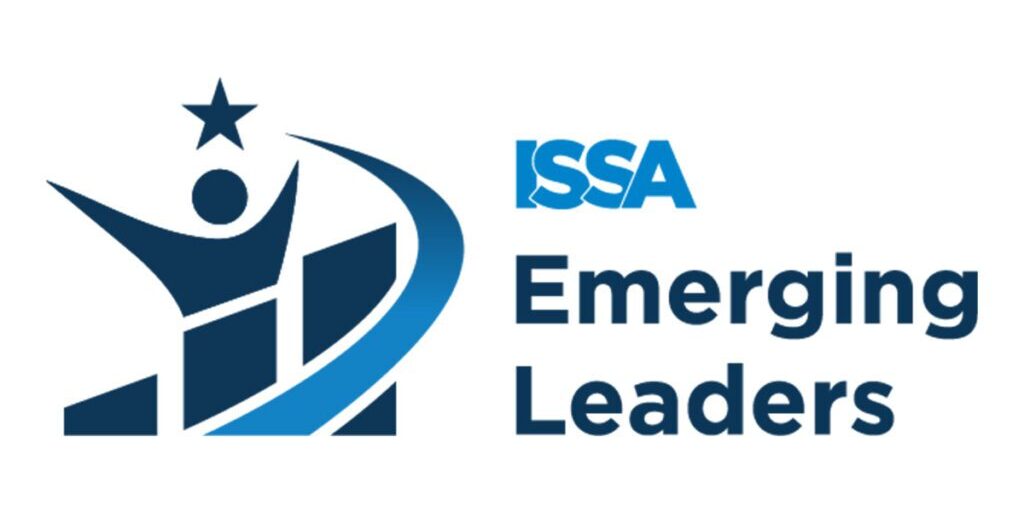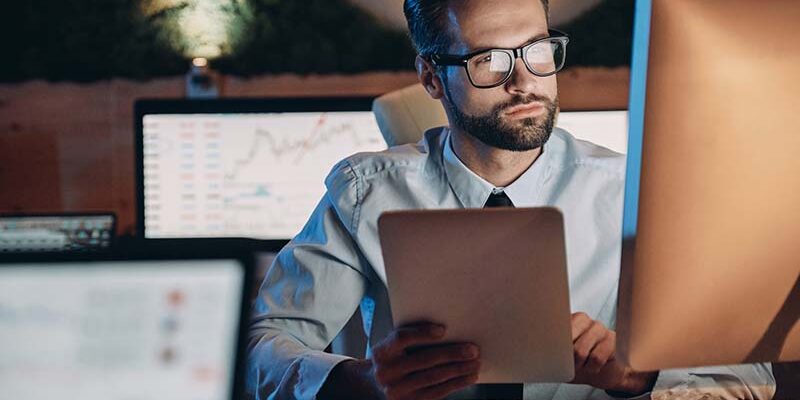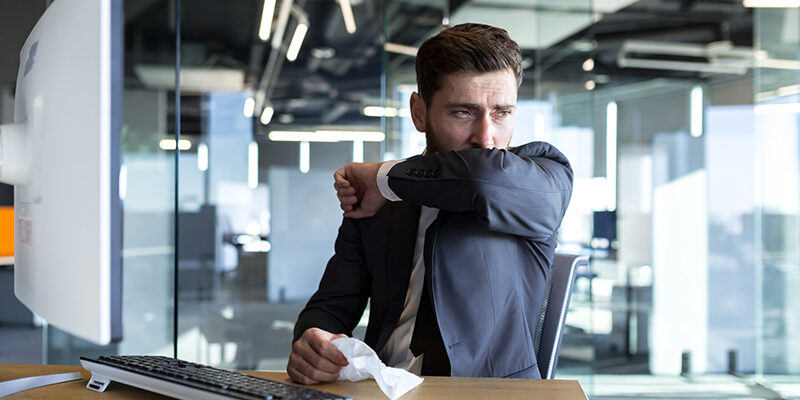The Future of the Cleaning Industry
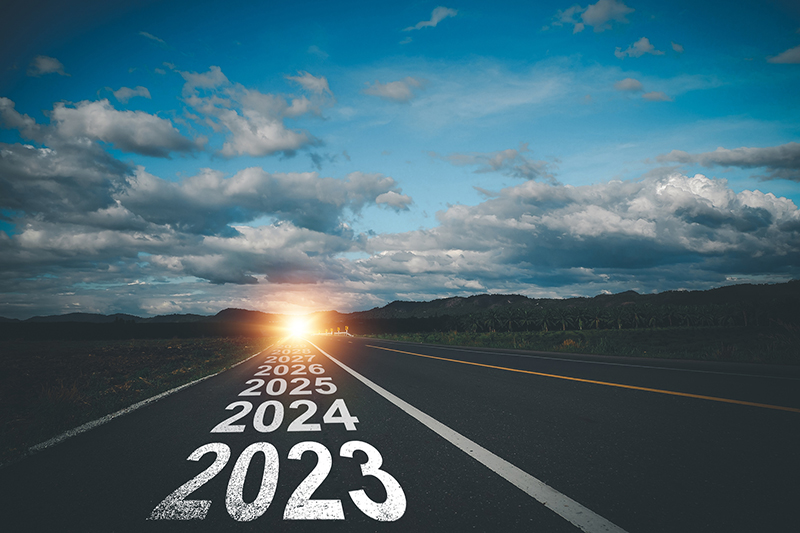
It’s a universally accepted truth. No one knows precisely what the future will bring. The future is a mystery that is constantly unfolding and, when it arrives, often catches us by surprise. However, by analyzing our past and present and taking the temperature of innovation, technology, and trends, we can—more often than not—accurately foresee what’s coming next for the global cleaning industry.
At least, that’s the hope.
In this excerpt from the special centennial issue of ISSA Today, we will have to tell you sometime in the future if some of the thoughts in the following paragraphs were correct. Read on and enjoy what a selection of industry thought-leaders, entrepreneurs, innovators, manufacturers, distributors, trainers, end users, and more had to share on the future of the cleaning industry.
This article will focus on four key elements of the industry:
- Innovation
- Cleaning for health
- Sustainability
- Diversity, equity, and inclusion (DEI) initiatives.
Innovation
Brad Horan is with Lucrature® and works as a finance and operations expert in the industry. He feels that artificial intelligence will significantly impact the future, much more than we have experienced recently. “We will see artificial intelligence (AI) models detect areas that need cleaning—driving cleaning to occur based on need,” he predicts. “This will reduce the impact of chemicals on the environment, drive down costs, and improve the safety and health of workers.”
AI technology is not just about products and equipment. Wendie Manion, with Supply Source, sees AI as impactful across organizations. “I believe more AI technology will not come just in products, but also in how businesses work,” she says. “Everything from order entry, purchasing, pricing, and more. I also believe technology overall will affect cleaning for health as new technologies are developed across multiple categories to make things faster, safer, more effective.”
Innovation is beneficial, critical to advancing the industry, and broad in application. That will only grow, according to Candido Rosario, with Fairfield University in Connecticut. “The field of custodial work is likely to see several innovations in the future,” he explains. “Smart cleaning systems, robotics and automation, advanced cleaning materials, UV-C disinfection, ultraviolet light technology, augmented reality, customizable cleaning plans, energy efficiency, biometrics, and security” were just a few he mentions.
David Swindle, the CEO of Wellness Cleaning in Plano, Texas, agrees. “Our industry is seeing the emergence of new, on-site generated chemistry, such as aqueous ozone, hypochlorous acid, and chlorine dioxide products,” he says. “In addition, peroxide-based chemistry continues to make significant advancements. Looking to the future, I think it will entail the combination of safer and more sustainable chemistry, along with advancements in cleaning materials, such as floor pads, cleaning cloths, and equipment integrated with chemical generation systems.”
Innovation will also impact those who clean homes, not just offices and commercial buildings. Jeannie Henderson, the CEO of Jeannie Cleaning in Kalamazoo, Michigan, sees innovation in her space driven, in part, by consumer demand. “People want their home clean and sanitized, but they don’t want it to come with the risk of exposure to toxic cleaning products,” she explains. “Homeowners continue to shift their preference to more environmentally conscious products and services. The next-generation cleaning solutions will provide safety for people, pets, and plants while producing excellent cleaning quality. Win! Win! When residential cleaners embrace all-natural and nontoxic cleaning strategies, they are positioned to attract more clients and grow.”
Brian Leafblad is the R&D Senior Manager, Global Business Solutions, at Reckitt. He sees the most meaningful future innovations emphasizing two different areas: Sustainability and Productivity. “When I say sustainability, I mean that in a very broad sense. We must think about sustainability across the value chain, beyond green certifications, although certifications can be very important. Sustainability, to me, starts with the manufacturer and sourcing of the ingredients, to the manufacturing processes of the final product, the packaging of products, storage, shipping, and point-of-use processes that impact things such as water levels and quality, employee and customer safety, and waste. When it comes to productivity, how can we all do our jobs better? How do we drive better results in germ kill, soil removal, and surface protection without adding unnecessary labor and cost? How do we help our customers and users of products gain productivity benefits from products? Product formulation, format, and packaging are integral to the story, but we also need to look wider to the manufacturing and usage process.”
Susan Gambardella is the president of Kimberly-Clark Professional, North America. She relies on research and data when looking at future innovation. “Our research insights indicate users will benefit from several innovation trends in the future, including smart technology and personalization, delivering a measurable and sustainable impact, and human-factored designing,” she explains. “The potential convergence of these trends has led to our investment in the development of beneficial product and service innovations that help make our customer’s workplaces healthier, safer, and more productive while helping to solve some of our industry’s toughest sustainability challenges.”
Grant Aslett, with the Museum of Clean, is a student of history, which helps him foresee what’s coming. “Labor management systems with lower office space occupancy and reduced building traffic—I see innovative ways to clean only the used areas,” he says. “We will have to rethink how we bid on cleaning. I once bid on an airport where the square footage was the same between the Delta terminal and the Southwest terminal, but the traffic was drastically different. Labor requirements were 35% higher for Southwest. Innovation is needed on standards and systems, less on old practices. Also, building design is changing. Many building owners are looking more at the total cost of ownership. The designers and architects are engaging the cleaning and maintenance departments to design buildings that are cheaper to clean and maintain; they are specifying surfaces that look good but don’t require specialized care for the life of the building.”
Cleaning for health
This component of the cleaning industry is not new, but one that is always discussed and debated. Cleaning for health will also be impacted by innovation, according to Anthony Maione, the president of Core America. “ATP (Adenosine triphosphate) testing and the validation of cleaning tasks through apps, sensors, and technology will play a large role in all facilities,” he says. Maione notes that some may feel this type of validation is mainly for health care and food safety facilities, but he sees it impacting all segments of the industry.
Some point to products as part of this equation. “I think we are going to see cleaners (chemicals and other products) that no longer are as harmful to the people and the environment,” according to Todd Stoneking with the University of Utah. “I think we see more material that resists soiling and even helps to fight bacteria on the surfaces. Most of all, I believe technology will play a big part, be it autonomous equipment or new methods of killing pathogens with light.”
Cleaning for health will evolve as we continue to stress the significant role of effective hand hygiene and cleaning protocols and procedures in mitigating exposure to pathogens, according to Keith Schneringer with Envoy Solutions. “This, especially as we continue to strive to make the invisible (pathogens) ‘visible.’ Ideally, cleaning for health becomes the expectation and the norm for all in the future and more than just a marketing slogan for some in the moment.”
John Strom, vice president and general manager of innovation with GP PRO, sees the impact of the pandemic affecting cleaning for health. “We have a generation of people who are growing up amidst a global pandemic, which is and will continue to change their perceptions of health and hygiene for a lifetime,” he explains. “Whether subconscious or front-of-mind, they will always perceive clean versus hygienic differently, and they will always have heightened expectations both at home and away. As a result, cleaning for appearance is no longer an option. Facilities must find solutions that enable them to deliver a healthy, hygienic space even amid current or potential future labor shortages, supply chain issues, and inflation. Manufacturers will need to develop these solutions. I believe the industry must embrace automation in every way possible to meet evolving consumer demands effectively and efficiently.”
Fabio Vitali, the vice president of marketing for Sofidel America, sees the recent past impacting the future. “The pandemic created an urgency to clean and disinfect to a higher standard,” he says. “While public demand to do so now is less than it was during the pandemic, it is still higher than pre-pandemic levels. Certain environments, like hospitals, schools, and public transportation, will continue to implement a higher standard of cleaning protocols, while others will step up activity during outbreaks.”
Some in the industry temper expectations with reality. That’s the case with David Grossman, the CEO and president at Renue Systems Inc. “I don’t expect there to be a noticeable change regarding cleaning for health in the future,” he explains. “While disinfecting became heavily demanded during the pandemic, this service has already diminished significantly among many customers. We would like to think that health would be a foremost consideration, but if a customer does not see a visible difference after cleaning, then they are much less likely to pay for it.”
Sustainability
If there is one topic top of mind for the industry, and perhaps the least understood, that would be sustainability. Everyone believes in it and wants to help, but some are still unsure if they can have a meaningful impact. If everyone contributes, everyone wins.
Tony Scibilia, the senior vice president of sales at Heritage Bag, sees that the greatest opportunities ahead involve sustainability. “Our industry is experiencing growing demand for post-consumer recycled (PCR) content. That’s why we’re expanding our recycling capabilities, helping us to meet this growing demand and allowing our customers to reach their sustainability goals,” he explains. His company has many moving parts involving recycling, saving energy, and expanding work on collecting post-consumer materials.
“From chemistries to packaging, we’re already seeing a pivot to more green and sustainable cleaning products,” notes John Shoffner, the president of Avision. “The past decade has provided the industry with products that protect people and the planet. In the coming decades, we will see widespread adoption of biodegradable and self-renewable cleaning solutions, coupled with the utilization of advanced drone or robotic technology for precision cleaning of hard-to-reach areas. These innovations will improve job satisfaction and effectiveness of commercial cleaners.”
Sustainability will be front and center in the future as more people realize that the environment is not inexhaustible, predicts Matt Herr with Trojan Battery Company. “Corporations increasingly take a holistic approach to pollution by building sustainability into every area of their organization: Research and development, product design, manufacturing, packaging, logistics, sales, customer service, and more,” he says. “Sustainability becomes more cohesive as new spaces are developed, with cleaning integrated into different applications uniquely. That includes flooring materials that can be cleaned with fewer chemicals or just water, HVAC systems that filter dust from the environment more effectively, and germ-resistant surfaces.”
Scott Jarden, the president of The Bullen Companies, cautions on an over-optimistic view of the future of sustainability. “Based on recent polling of facility service providers, sustainability and green cleaning have lost the luster they had four or five years ago pre-pandemic. We think, as we move into the future, there will be a shift back to more appreciation for ‘green’ products and processes.”
Some who contributed to this article were specific on how they see sustainability in the future. That’s the case for Chris Matson, president of Nexus. “In 25 years, it is my opinion that the country will see more regulations on harmful chemicals, like PFAS, in more cities, counties, and states across the United States,” he says. “In addition, government restrictions and mandates on using recycled materials will become more of the norm with manufacturers who will be required to use a larger percentage of recycled or even post-consumer raw materials than is used today to make products like can liners, paper towels, and bath tissue. In 50 years, I believe these same regulations will cover most of the country. In 100 years, I believe these same regulations will be mandated even at the federal level,” he adds.
Dane Poeske, with HCI Cleaning Products, cautions those companies that are not looking at the entire scope of sustainability. “Today, most of the cleaning innovations are around simple, sustainable packaging changes rather than true product innovations,” he explains. “The future will not be pretty for those companies unwilling or unable to develop highly sustainable, next-generation cleaning products and tools that are nontoxic, safe, and low-cost. This will happen over the next 10 years, and there will be winners and losers.”
Matt Urmanski is the Vice President of Sales and Marketing of Essity’s Professional Hygiene division in North America. He stresses the importance of sustainability in our industry today and its continued role in the years to come “until at some point it is integrated fully into our way of living in all geographies of the world. The continued work to reduce emissions, limit waste, and preserve the health of our environments will grow and expand as it becomes the standard. Single-use products will continue to be replaced by reusables wherever possible. New environmentally friendly raw materials will be used. New energy sources with lower CO2 emissions will be adopted.” At Essity, Urmanski notes the company sees biodiversity as vital for environmental health, human health, and well-being. “Our business impacts biodiversity in all parts of the value chain, especially through our activities related to procuring raw materials, greenhouse gas emissions, water usage, and waste leakage. We see the reduction of greenhouse gas emissions as a key issue for today and the future.”
Diversity, equity, and inclusion initiatives
Some see challenges in the future with the concept of diversity, equity, and inclusion (DEI). Sharon Cowan, CBSE, with Cleaning Business Consulting Group (CBCG), says, “It depends on government regulations. We will most likely move from hiring the most qualified to hiring who fits into what box.” Her concern is echoed by others, that who someone is might mean more than what someone is qualified to do.
Bob Bock, the national sales manager for aftermarket and e-commerce with ASI—American Specialties Inc., hopes that any future initiatives involving DEI are determined by the most qualified and gifted prospects. “It will encourage our brightest minds to get involved in today’s big issues. It should not matter your background but what value you can bring! As we include people from all walks of life in our industry, opportunities will become available to everyone.” He also feels that the future of DEI should be determined by the most qualified and gifted professionals doing the jobs. “It will encourage our brightest minds to get involved in today’s big issues. It should not matter your background but what value you can bring! As we include people from all walks of life in our industry, opportunities will become available to everyone.”
Although some efforts now with DEI can appear stalled, recognizing that and pushing forward is important. Michael Mahdesian, chairman of the board of Servicon Systems Inc., says, “It will grow, even though there is a modest backlash in some quarters as of now. It will become a key factor in awarding bids and developing client partnerships.”
David Drake, president of Spartan do Brasil Produtos Quimicos Ltda in Sao Paulo, Brazil, likes the future of DEI. “This is obvious! These initiatives have nowhere to go but up. We are either proactive about it now or let the next generation begin the process. If we want to attract the best and the brightest to our industry, our generation cannot wait and must incorporate these initiatives now.”
For some, DEI may provide some attractive elements, according to Jose Rodriguez, a strategic account manager with Tennant Company. “I think we’ll continue advancing towards a more equitable future. All companies and governments will be more a reflection of their population,” he says. “I would say to a young person, get ready to be surprised. It is a larger, more interesting, and rewarding industry than they think. I would suggest they look to understand business at a high level, but never forget that the customer is what’s most important.”
And it will be a united industry that makes all this happen. Campbell Dodson, with CFS Technologies, says, “DEI initiatives have gained significant momentum in recent years and are likely to continue evolving. We should not only expect to see a greater emphasis on DEI initiatives across various industries but also step up as an industry to champion these efforts.” He sees the future of DEI initiatives likely shaped by ongoing efforts to create more equitable and inclusive organizations. “Advancements in technology may play a role in driving progress, with the potential for AI-driven tools to help identify and address bias in hiring and promotion processes being a currently debated topic. While it is challenging to predict the exact trajectory of DEI initiatives, it is clear that there is a growing commitment to its success from leading companies and industries.”
Timothy Allen, with the Columbus Regional Airport Authority of Ohio, values what is happening in the industry regarding DEI. “I’m thinking overall, the future of DEI initiatives will be characterized by a deeper commitment to creating inclusive environments, valuing diversity, and ensuring that all individuals have equal opportunities to thrive and contribute. This will not only be seen as a moral imperative, but also as a strategic advantage in a diverse and rapidly changing global marketplace.”
The trajectory of DEI initiatives in the future will depend on various factors, believes Ateny Ajak, with Stay Clean LLC, “It’s important to note that the future of DEI initiatives is not predetermined and will depend on the actions and commitments of individuals, organizations, governments, and society as a whole. The trajectory may vary across regions and industries, but the overall trend will likely be towards greater recognition and prioritization of diversity, equity, and inclusion.”
Future challenges
While no one can see into the future, we can identify future challenges based on what is happening right now—what we see and experience. Added to that, history has been a form of litmus test for many industry professionals.
While the future remains an enigma, our past and present hold clues to help us identify what to prepare for next. With that in mind, the following are additional thoughts of some who responded to the invitation to contribute to this feature article.
Benjamin Burrows, industry author: In the next 100 years, I see most of our common areas cleaned via automation, but managing this will still require the human touch. It will require human involvement, training, management, and inspection. Humans are the only species on the planet concerned about “cleaning for health,” so removing the human from the process will … destroy the process.
Matt Vonachen, CEO at Vonachen Group: The market will continue to grow automation, driving efficiency. There will always be a large demand for workers; what they do and how they do it will change as technology develops.
Kenneth Bell, University of Maryland: I think some of the biggest challenges we will face are those who are stuck in a certain mindset they have had for years and not being open to the progression in the cleaning industry that can make things better by cleaning for health.
Mathew Mahoney, custodial supervisor for Johnson County Government in Kansas: If the past three years have taught every business anything, it is that customers now look at the facilities they enter with cleaning in the back of their minds. So, hiring staff, funding, and developing a cleaning program will challenge every business.
Kyra de St. Paer, senior director of marketing with CloroxPro: When confronted with a global pandemic, the cleaning industry was on the front line, quickly adapting to address cleaning and disinfecting needs to help protect public health. We are still coping with the lasting impacts of this responsibility. Longer hours and less time to train new staff have led to higher rates of worker burnout, perpetuating a cycle of high employee turnover that we will continue to see if action is not taken. To overcome these challenges, we must focus on cleaning professionals first and develop new products and training solutions to support them better and increase retention.
John Howell, business development manager with Novozymes North America: The biggest challenge for companies will be a labor shortage as many younger workers chase different opportunities. Companies will need to pivot towards more automated cleaning systems. This will create an opportunity to reinvent the future of cleaning using more sustainable bio-based cleaning agents in conjunction with automated systems.
Jeffrey Carey, vice president at HI&I Americas for Brenntag Specialties: The cleaning industry must redefine itself as a critical industry for human health. We must become even more innovative in our products and services and be seen as societal partners. Without this redefinition, the industry will continue to struggle with profitability and growth. Ultimately, consumers must understand and desire the benefits of hygiene in their daily lives. Successful redefinition of the industry and innovation in our products and services can truly not only make our industry live for another 100 years, but make it thrive.
Pat Schottler, vice president of marketing at Tennant Company: Automation is not simply a technology disruption; it’s a huge opportunity to change the entire cleaning ecosystem. By automating some of the more routine, mundane tasks like floor cleaning, organizations can upskill their labor and make it a more appealing career. A large portion of cleaning is still manual. However, through further mechanization of cleaning technologies, there’s an opportunity to improve the lives of cleaners, enhance the quality of clean, and do more within the same or lower budget.
Daniel Hiza, vice president of marketing with Pritchard Industries: Challenges include adapting to rapidly changing technologies, combating misinformation about cleaning products, and managing the environmental footprint. Opportunities lie in embracing sustainable technologies, expanding into emerging markets, and harnessing the power of data analytics.
Next steps
With all these thoughts, ideas, suggestions, and predictions from a wide swath representing the cleaning industry, what’s next? Do your part. Analyze your own role and honestly ask yourself what you can do to better the industry. Each of us is a small cog in a big machine, but at the same time, we have a say and impact on those around us.
Our individual choices, no matter how small or insignificant they may seem, have a ripple effect. Let’s harness our collective power and strive for a cleaner world as we all work to advance clean and drive innovation.


